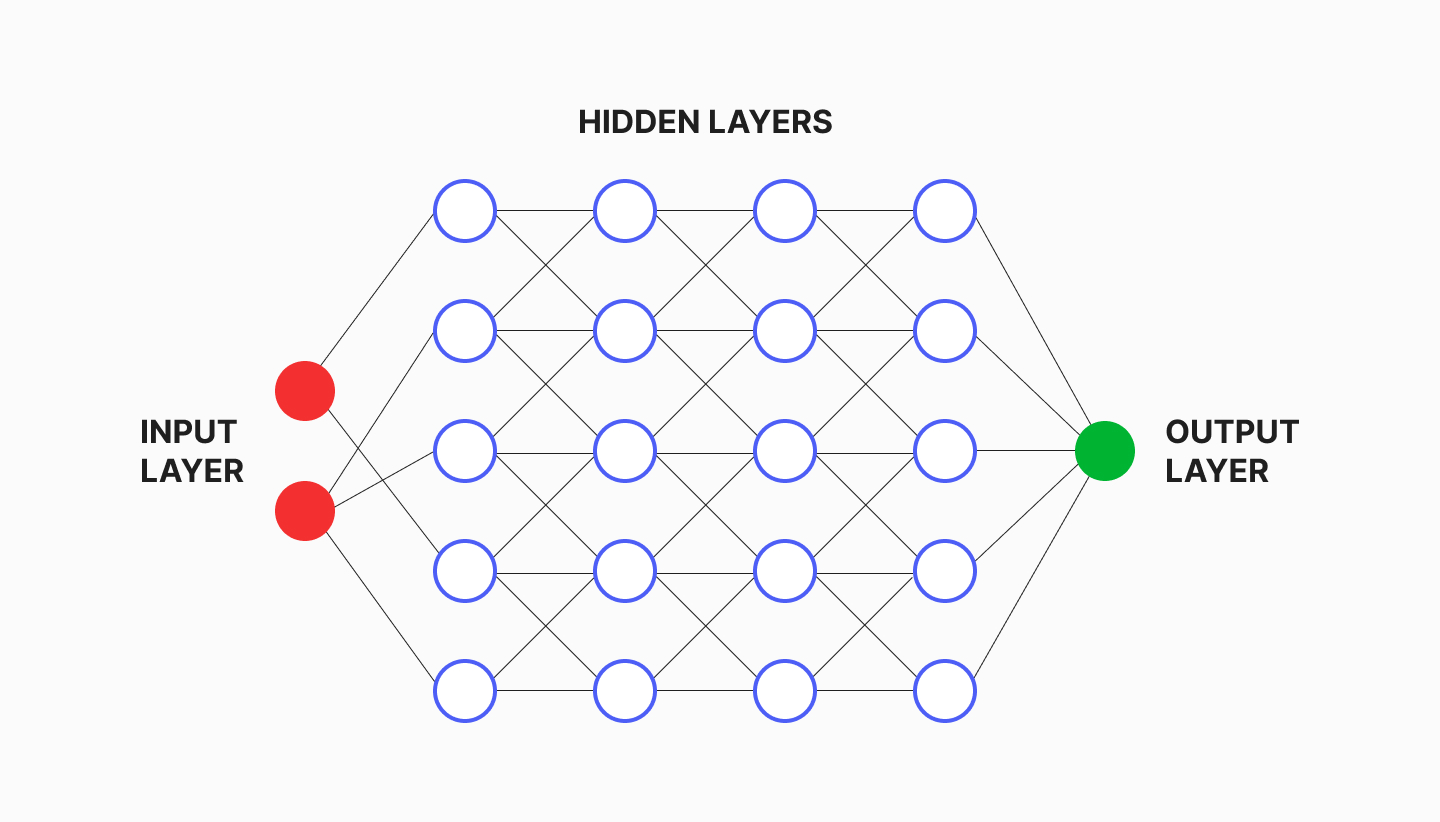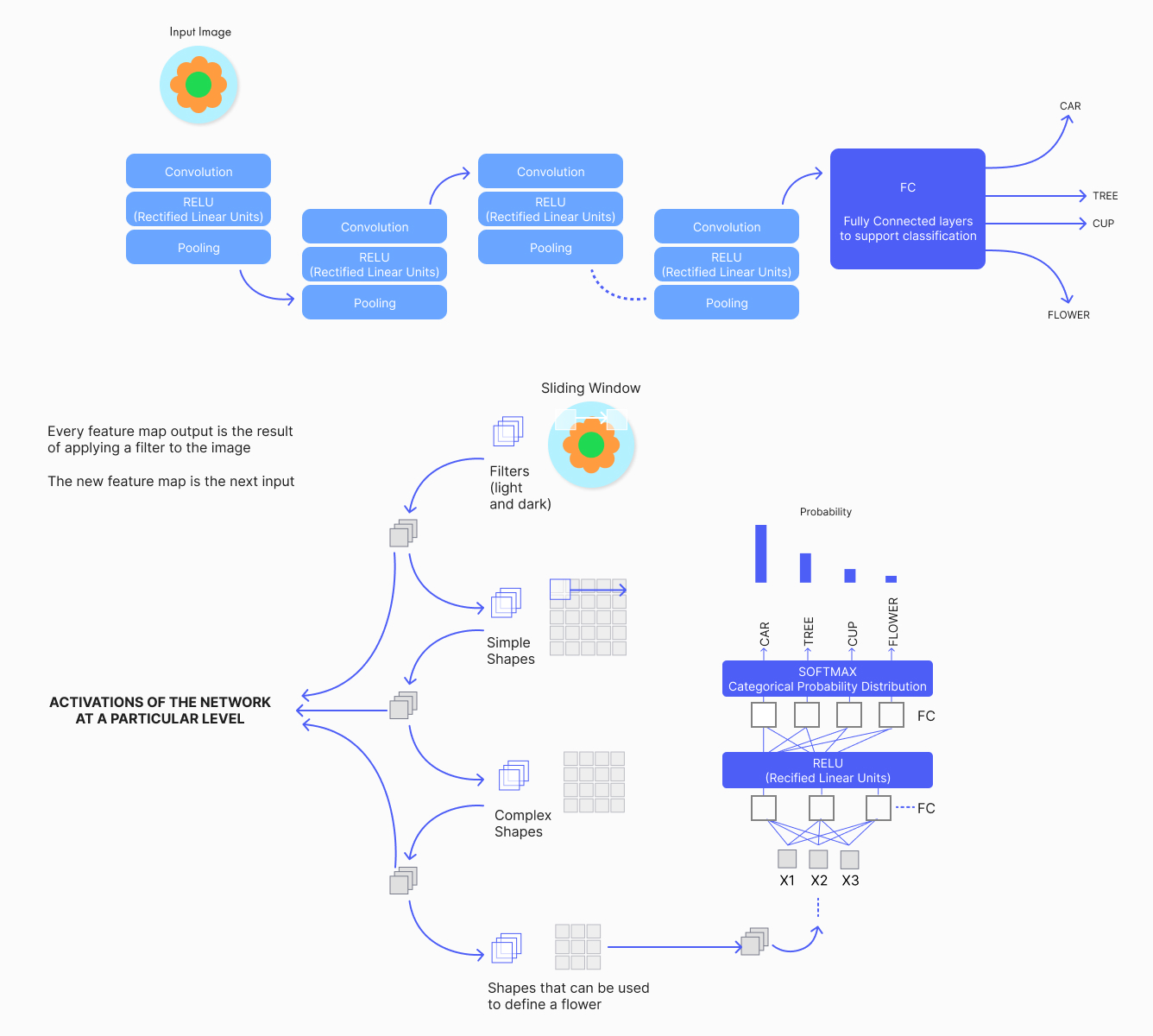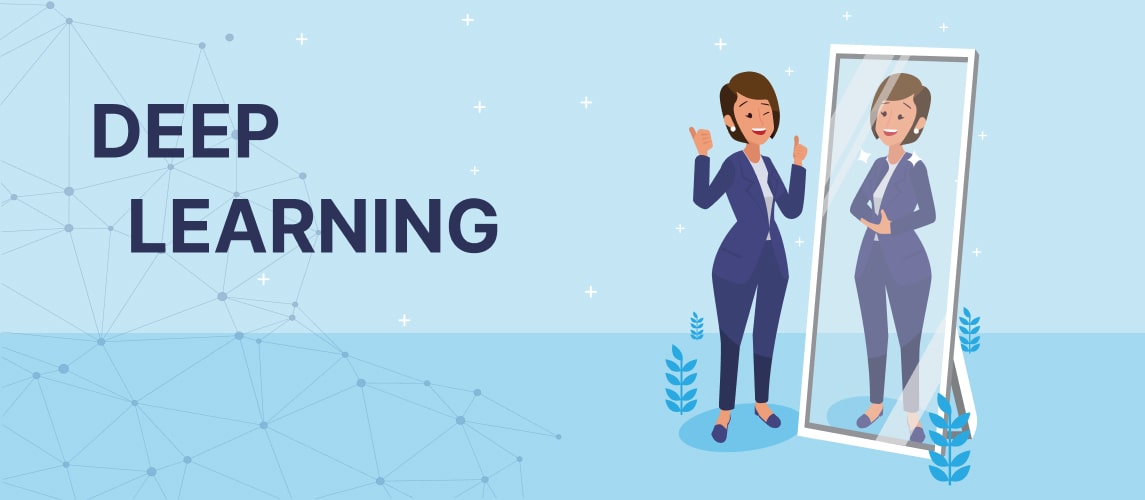Deep Learning is a quite popular method of machine learning, which is based on multilayer neural networks aimed at self-learning on a large data set. In other words, the method is designed to predict outputs given input data. Deep Learning is actively used in computer vision, machine translation and human speech recognition.
Deep Learning neural networks are various components that are interconnected. Neural networks application has become a new stage in the development of science, and AI itself has gained the ability to solve the most non-standard tasks.
How are neural networks arranged?
To apply Deep Learning, certain conditions are required, a large amount of information and the need to solve problems. In Deep Learning 2 methods are used – with or without a teacher. Neural networks are usually divided into layers, in short, the structure of neurons in one task:
- The input layer is responsible for the incoming data set. Usually, in simple models one neuron is one parameter. From this layer information flows to the next.
- Hidden layers are designed to do calculations based on input parameters. There are a lot of them in Deep Learning, this is done in order to find as many relationships as possible. Moreover, links are assigned different significance, it also determines the importance of the input value and affects the prediction of the result.
- The output layer shows the result of the calculation.

Many Deep Learning methods use the architecture of neural networks, which is why Deep Learning models have received the same name – deep neural networks. By itself, the term "deep" most often refers to the number of hidden layers. For example, if there are 2-3 hidden layers in neural networks, this is a traditional type, and if up to 150, this is already deep.
Large tagged data sets and neural network architectures are used to train DL models. The latter learn features from the data without having to manually extract them.
Convolutional Neural Networks (CNN) are one of the most popular types of Deep Learning. They combine the learned functions with the received data. CNN uses 2D convolutional layers, so this architecture is suitable for processing 2D data such as images. Consider the example:

The image shows an example of a neural network with many convolutional layers. Filters are applied to each picture, regardless of its extension. Accordingly, the output of each thumbnail is the input to the next layer. The peculiarity of CNNs is that they learn to identify all sorts of features of an image using dozens or even hundreds of hidden layers. Each of the last layers increases the complexity of the learned features. For example, the first layer detects edges, while the fourth layer finds more complex shapes adapted to the shape of the object we need to recognize.
What problems does Deep Learning solve?
Deep Learning is used in various areas of human life. The method is applied in commerce - business process automation to provide an individual approach by analyzing and systematizing customer data. Moreover, DL is actively used:
Machine translation. Neural networks receive millions of examples of text fragments and their translation. They can analyze the context of the use of words and even grammar. One of the best examples of machine translation is Google's GNMT.
Computer vision. Deep Learning is used for recognizing objects in images. Neural networks find patterns after analyzing areas in a photo. This is how Google image search works. Computer vision recognizes faces on CCTV cameras.
Synthesis and recognition of speech. Siri is a good example in this area. Speech processing and synthesis technologies have become even more accurate thanks to Deep Learning. They learned to identify speech features: speed, accent, age and pronunciation.
Mass digital transformation leads to the accumulation of a large amount of data in various areas of our lives. This raises an obvious need to solve the emerging problems of forecasting, managing and making decisions with the help of AI. The method of Deep Learning opens up new opportunities for mankind in the implementation of these tasks.
